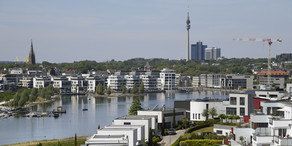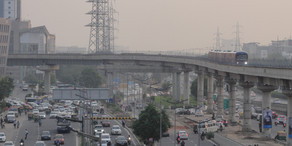Research news and events
New article on infrastructure segments
- News
- Archiv
- Forschung
- Fachgebiet

Article
Nyamai, D. N., Schramm, S. (2025) Infrastructure segments evolving through transient governance: Nairobi metropolitan services and active mobility infrastructures. Urban Studies. Epub ahead of print 2025. DOI: 10.1177/00420980251317140.
Authors
Abstract
The expansion and transformation of large sociotechnical infrastructure networks have profound spatial, social, and political implications, reflecting broader socio-spatial struggles and uneven power relations in cities. This paper explores these dynamics by focusing on Nairobi’s recent infrastructural developments under the Nairobi Metropolitan Services, a temporary governance body that significantly impacted the city’s mobility infrastructure. Despite the temporary nature of the Nairobi Metropolitan Services, which governed Nairobi for two years, its interventions in constructing walking and cycling infrastructure within the Central Business District highlight the potential of infrastructure being integrated into a complete network at a moment in time in future. The paper critiques traditional views of Southern infrastructures as fragmented and incomplete, proposing instead the concept of ‘infrastructural segments’ to emphasise their potential for future integration into a cohesive urban network. By examining how these segments emerge and may evolve, the research offers a nuanced understanding of the intersection between temporary governance and infrastructural development. It engages with current debates on infrastructural incompleteness and temporal dynamics, arguing that such segments hold the potential for significant future contributions to urban mobility and coherence. Through this lens, the paper provides insights into how political decisions shape infrastructural priorities, and what it may take to integrate these segments into a more cohesive urban infrastructure in Nairobi and indeed in other rapidly urbanising Southern cities.
Find the full article here.







